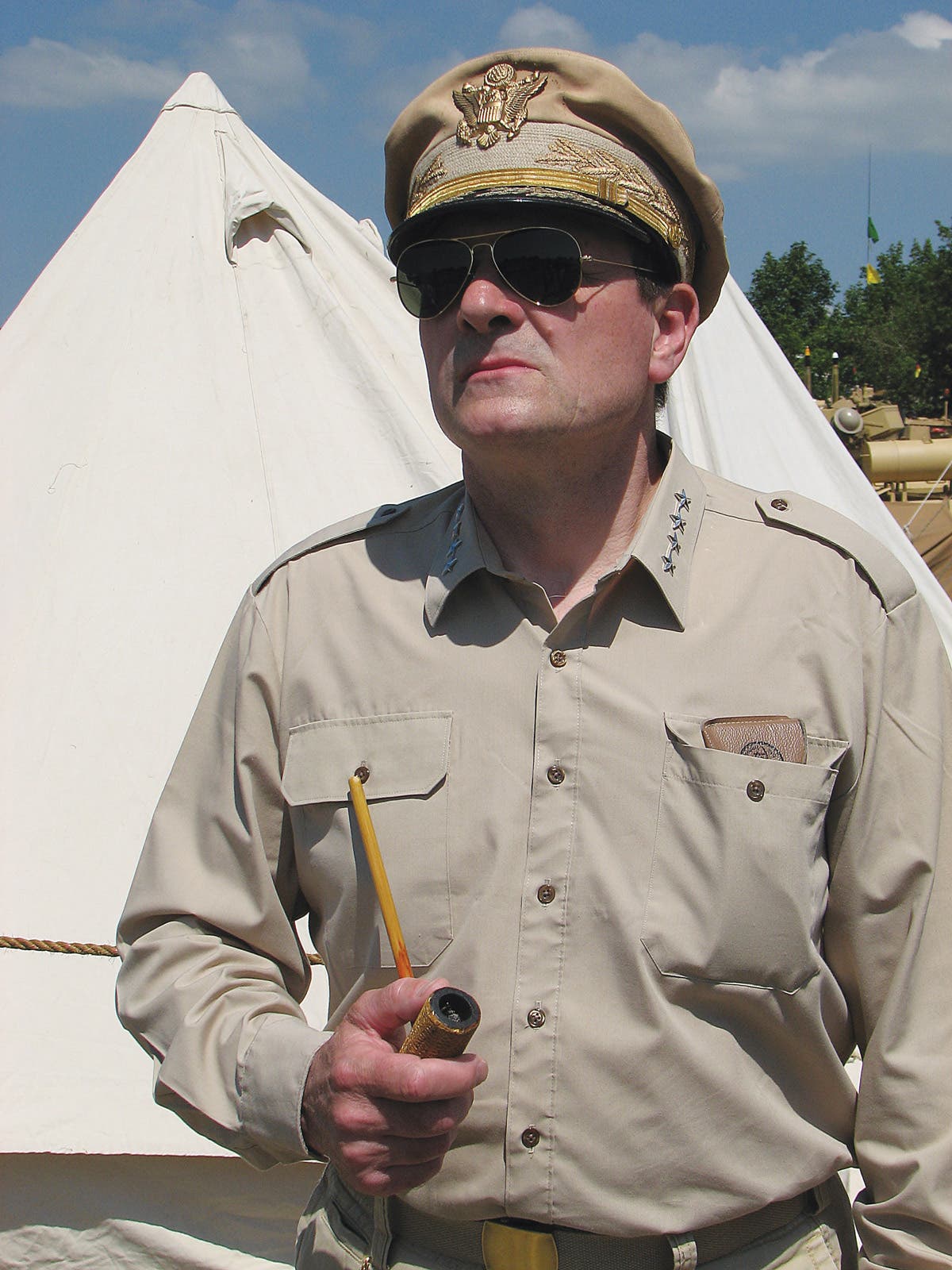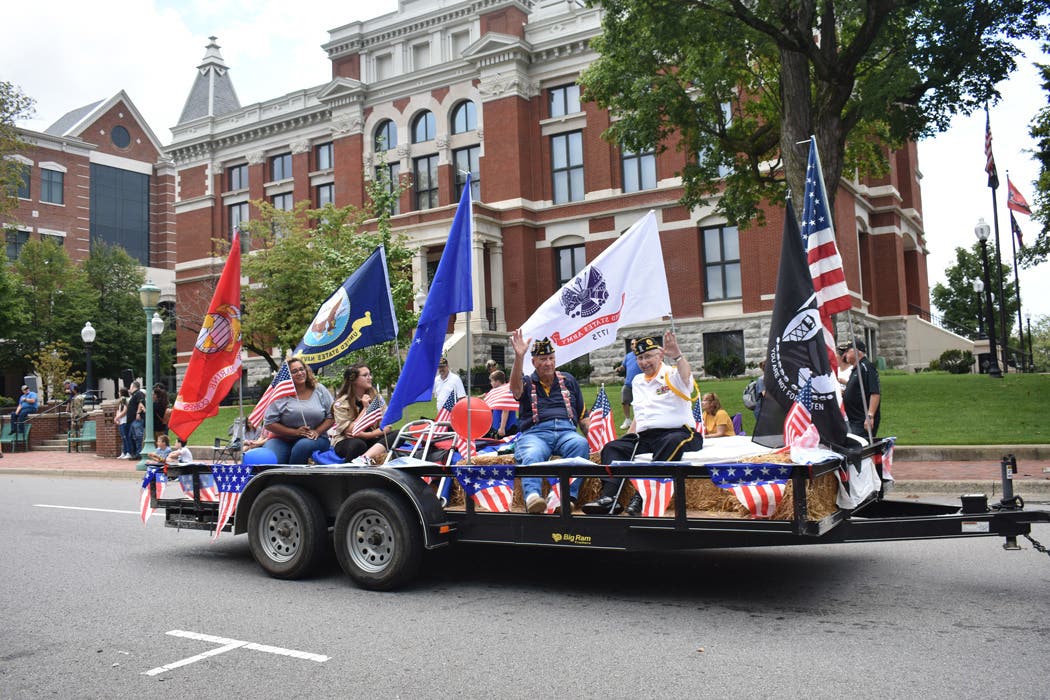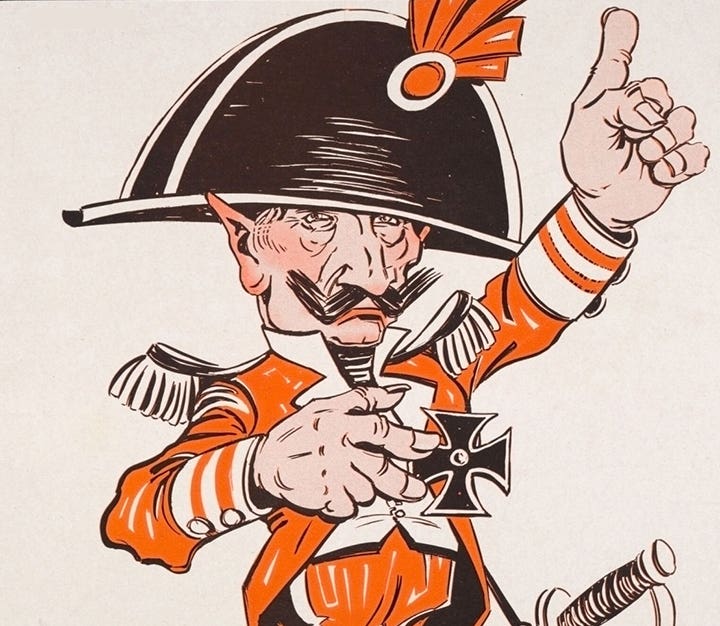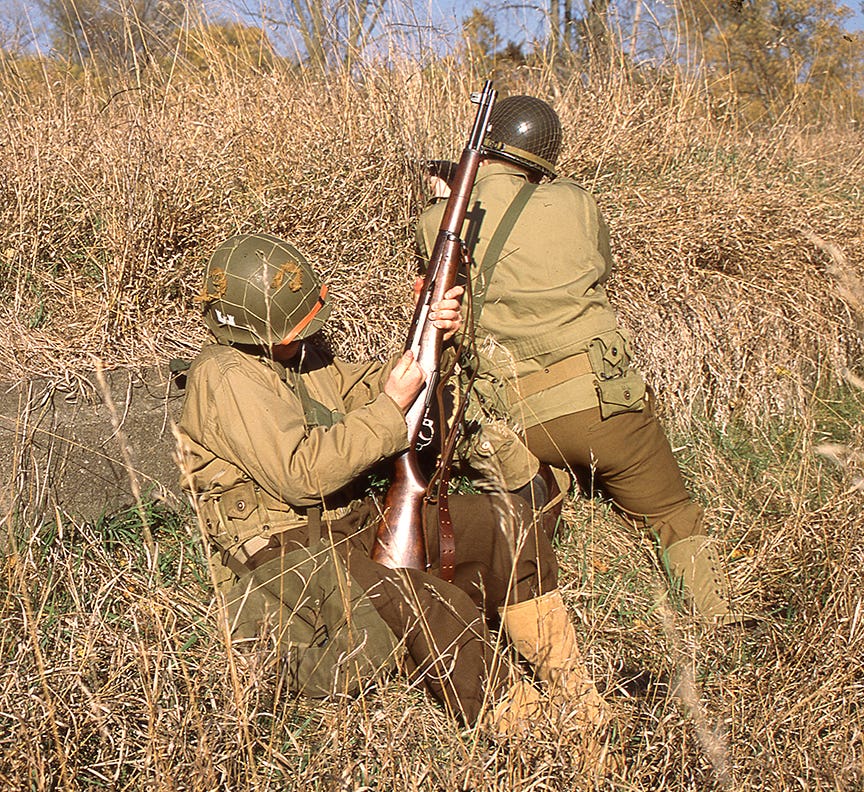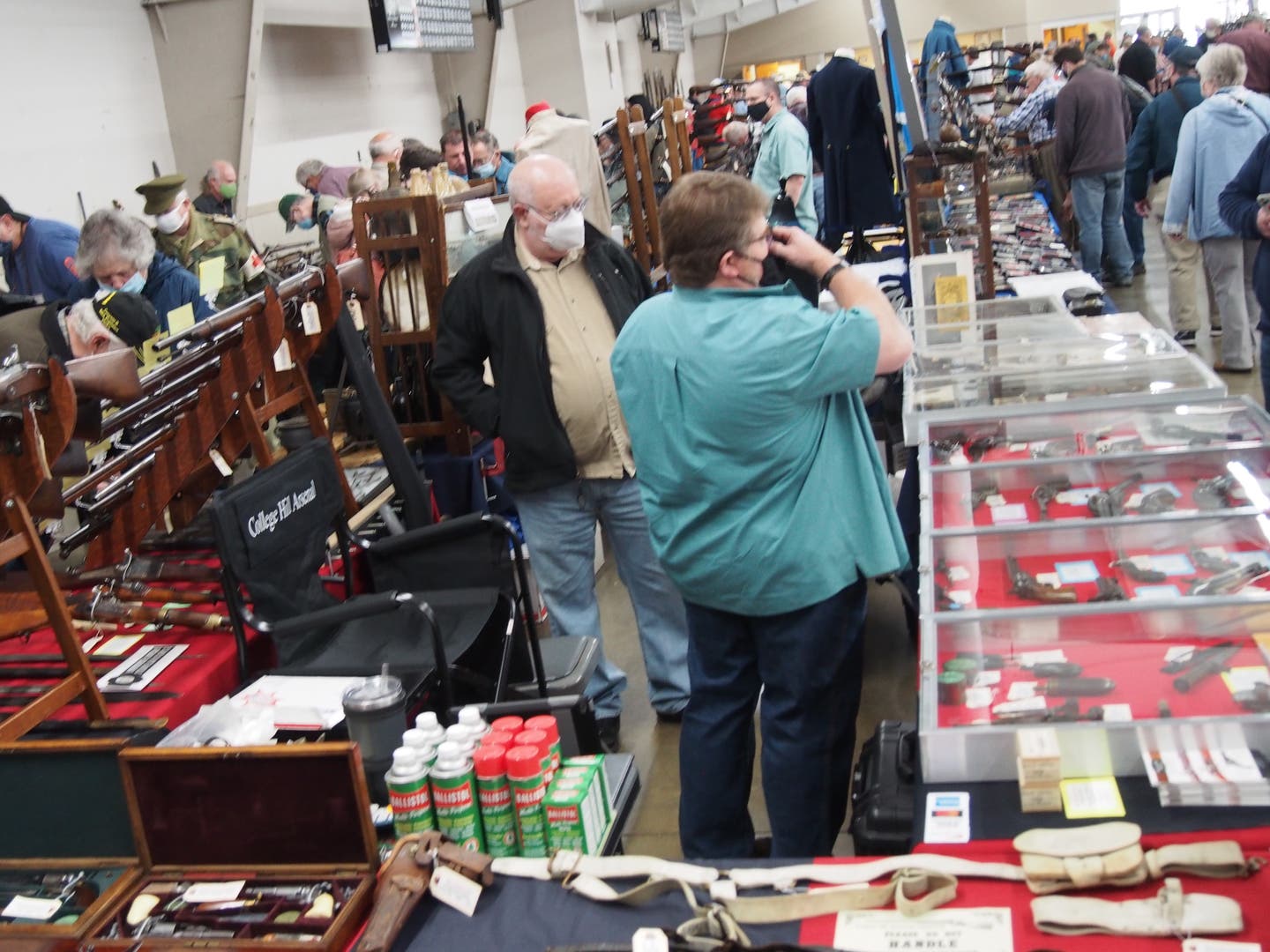Reenactor Basic Training: Tips from the ‘veterans’
by Peter Suciu While we think of “reenacting” as being a fairly new hobby, in fact, it has been around since the Middle Ages when tournaments reenacted themes from Ancient…
by Peter Suciu
While we think of “reenacting” as being a fairly new hobby, in fact, it has been around since the Middle Ages when tournaments reenacted themes from Ancient Rome. More recently, during the Victorian Era, reenacting became popular across Europe – which is why many supposed weapons, pieces of armor and other accoutrements show age but are, actually, decorative pieces made during the post-Enlightenment era.
Today reenacting is a major hobby that encompasses “living history” in a variety of ways. While reenactments could include those depicting the Wild West, the Renaissance and other affairs much of that is actually beyond the scope of this article. Instead, this will address getting started in military reenacting, specifically from the American Civil War to the Modern Day.
The first thing to understand about reenacting is: When it comes to military history from the past 150 years, if it happened, someone might likely be reenacting it. Of course, there are often issues of scale in terms of who will participate. There might be those who appreciate the American Indian Wars – which are arguably apart from the Wild West theme – but in few cases, these don’t have the large scale engagements that people come to expect from American Civil War or modern reenactments. There aren’t many Native American hobbyists who would want to relive their showdown with the U.S. Cavalry.
Thus, the hobby is more focused on what could be argued were “two-sided affairs.” This is why the American Civil War, the First and Second World Wars and the Vietnam War are those conflicts that tend to get the most interest and attention.
Recruitment
The first thing to “get started” in reenacting is finding an event that is close by – or within what one deems to be acceptable travel distance – and finding a group to join. The most important thing to understand to join a group that shares your same military history interests. In other words, if you’re interested in reenacting and are a WWII buff you probably shouldn’t settle for joining a Civil War group just because it is the only one you can find.
Big or Small?
The next question is whether it makes sense to seek out a big event or a smaller affair. The thing to keep in mind is, if you start out at a larger event, the smaller ones might not live up to those first impressions. You might need to manage your expectations accordingly.
“Smaller events make it easier to get a grip on all of the options available, namely in terms of units,” said Civil War reenactor Kevin Saville. “Unit involvement is at the heart of reenacting, at least for beginners; one must find people in units that they may wish to interact with in order to learn the unit’s ways and expectations.
“Unit members may be more available and friendlier at smaller events, as those events are often looked upon as being recruiting opportunities,” Saville added. “However, smaller events will likely not attract participation by all of the units present at large events, so a newbie may find a unit at a larger event that they like better than they found at a small event.
Moreover, Saville told Military Trader that at larger events there are generally more things going on and a whole lot more to see. This can mean that units may be busier and some will be less willing to talk to those who might only be “kicking the tires” so to speak. Thus, it might be worthwhile to try to attend a couple of events before deciding which is right for you.
“I don’t think it matters where or when you start,” said Rich Bright of the Washington Civil War Association. However he adds it is good to get pre-informed. “Look at the local state websites, find a branch or thing you think you want to do.” Moreover, ask around. Talk to people in advance.
“Contact several units, and talk to someone, these are the folks you’re going to get to spend lots of time and sometimes lots of money with,” Bright told Military Trader.
“Arrange to meet them, see who fits you like a first date if you will. Go see an organized event, talk to them. The same way, you might if you join the U.S. military, figure out what you want to do, talk to several Units, Branches, Gray or Blue, etc.... do research before you contact anyone, or go to an event or before you join a unit.”
While actual military recruiters throughout history had quotas and would sometimes stoop to extremes to get “volunteers” through nefarious means that isn’t the case with reenacting. As such you might have to be one that also tries to “sell yourself.”
“A newbie should be tenacious and gain sufficient contacts and information in the unit of their choice regardless of the event size,” added Saville. “Likewise, units should welcome newbies in order to increase their numbers. One never knows at the outset how the interest will develop; a once-newbie will someday likely be in a command position.”
Find the Passion
Getting involved in reenacting should also be about that connection to history. It is more than merely “playing army” or “dress up.” It isn’t – and never should be confused with - what actual soldiers endured. For one thing at the end of the day or weekend you’ll get to go home, take a hot shower and eat a warm meal and watch TV. Most times soldiers slept where and when they could, ate lousy food and a luxury was living to see another day. Appreciating history, however, is what a reenactment is about.
“American Civil War reenacting and living history is a hobby, passion, and/or pastime of many people from all walks of life,” explained Saville. “There are enthusiastic participants of very humble means and professionals, such as doctors and lawyers.”
Saville added, “Reenacting” and “Living History” are two somewhat overlapping names in general use, though to be specific, they define distinct activities.
“To ‘reenact’ would suggest recreating something specific that happened in the past, such as a particular battle,” he noted. “To ‘live history’ would suggest portraying a person - real or fictitious - and occupation that occurred in the past, but not necessarily a specific, documented moment in time.
“At most events, both activities may occur, but at events in the Pacific Northwest, events are more living histories than reenactments,” Saville emphasized. “ In the East and South, Civil War reenactments occur generally near, or occasionally on, historic battlefields at a time corresponding to the event’s anniversary. Since battles didn’t occur in the Pacific Northwest, a (local) event may be dedicated to somewhat depict or recall a certain aspect of a historic battle but it will probably fall far short of accurately portraying the battle.”
Gearing Up
When joining the military most things are provided, including uniform, weapon and equipment. Unfortunately this is far from the case with reenacting. Everything from the boots to cap, belt, gear, guns and even grub (if you’re planning to eat in the field) need to be purchased by the reenactor. That doesn’t mean that a newbie should plan on having to take out a loan for the first time out, however.
“First, never buy any gear, until you join a unit,” said Bright. “Let the unit members help you. There are too many uniforms to choose from, and they are not created equal.”
Some units will also have loaner gear for those who might be joining them, but don’t expect to use it for the long run and be sure to make arrangements to have what you need prior to going to an event.
“Some units may have sufficient loaner gear to sign up, and suit someone up, at the person’s first event,” Saville concurred. “Some units may not have any gear that usually comes to events; some unit members may step in and help out.”
There may also be members willing to “contribute to the cause” as well. However, as noted this shouldn’t be considered a gift and shouldn’t be expected to be available for long.
“Once a newbie is enrolled in a unit, then the unit will likely arrange for some degree of loaner gear at some number of future events,” Saville noted. “Some units may not want a newbie to use the loaner gear for more than a certain number of events in order to make the gear available for other newbies.”
This isn’t just limited to Civil War, as World War II reenacting requires a head-to-toe gear up as well. However, because World War II has been the subject of so many movies, TV shows and even video games it creates new issues – as a little bit of knowledge can be dangerous for the newbie reenactor.
“The first thing they do is buy something that might be ok such as a part of a uniform,” said Jonathan Stevens of the WWII Historical Re-Enactment Society. “Finding the cheapest trousers or shirt is of course not always the best idea. The new guys should always pick the brains of the unit and find out exactly the things they need and where to get them.”
The Essentials
So once in a unit the question is what next? This is when it comes time to start acquiring all that gear. This will take some time, but there are what can be argued the “essentials.”
The first point said Bright is to never buy anything without discussing it with the unit you join, and this includes the firearms or other weapons. Bright noted that these are among the most common items but also tend to cost the most – with the exception or horses and cannons for Civil War, where Jeeps and Tanks are comparable when discussing later conflicts.
So what, exactly, is an “essential?”
“The only absolute essentials are—or should be—those items visible on a person’s body through the course of normal body motion,” said Saville. “A newbie should plan to look the part in all instances, in conformance with his/her chosen unit’s recommendations.” By this, Saville noted, that it is best to avoid “anachronisms” as much as possible.
“Early on, I wore a modern wristwatch,” he told Military Trader. “I went to a small event and was in the firing squad to provide some volleys. I was unaware how much that watch showed up when I extended my left arm to fire. As luck would have it, a newspaper reporter struck an image with my wristwatch showing and it ended up on the front page of a city paper. It taught me to always use a pocket watch.”
There are exceptions of course. Some mainstream units permit members to wear modern glasses and shoes for years; but Saville contends this should be avoided like the plague so as to maintain a minimal ‘authentic’ appearance.
Thus it can take a while to find the appropriate gear. One point is that it is never a bad idea to look for used items when possible.
“Reenactors come and go, so rifles, tents, uniforms and misc. gear are often for sale, and your unit folks will be able to direct there,” Bright added.
What makes it more of a minefield is that there are so many options today for reenactors, as many companies now produce replica gear – sadly of varying quality and accuracy. Just because the seller or vendor may say it is like the real deal it is best to ask around for opinions.
“eBay is usually their first stop however there are so many wrong reproduction WWII items,” Stevens said of those just getting started gearing up. “Which goes into the second wrong thing and that is using their grandfather’s dog tags or cap or insignia. One thing that often happens is that things like that are damaged or lost.”
In other words, if it is real leave it at home and display it. Don’t play with it in the field.
“I had a compass pouch found by my father in the South Pacific,” Stevens admitted. “Unfortunately, I thought it would be cool to wear his cap and carry that compass. Of course, the pouch was damaged much to my disappointment. Generally, I do not use much original equipment especially if it has a history to my family.”
The Right Shape
Today, a number of companies now specialize in providing uniforms, gear and accoutrements for reenactors. There are jokes that there is a “fat tax” as the large sizes to come with a premium price. The truth is no matter how accurately the reenactors may be dressed there will always be problems.
For one thing most soldiers – not all but a good many – will be younger than those doing the reenacting. This becomes more and more of the case with WWI and WWII. Part of this misconception comes from seeing the veterans of the Greatest Generation today as old men. It might be hard to think of them as young men barely old enough to legally drink in most states.
The other part of it were the various WWII films of the 1950s and 1960s – Kelly’s Heroes for one – that suggested that WWII might have been fought by middle aged guys! Not exactly what one might call the most accurate depictions, but this is still a “fantasy” and a way for many to get to play army as they did as kids.
The question becomes what kind of shape one needs to be in to reenact?
“Just about anyone can do WWII reenacting, however I do think that a person should be relatively fit to begin WWII reenacting for two reasons,” said Stevens.
“One is that it can be somewhat physically demanding,” Stevens told Military Trader. “Often in WWII reenacting you will be drilling or digging a hole or carrying firewood for your camp and hustling around a ‘battlefield’ in a low crouch position.”
This doesn’t mean that one needs to be in marathon running shape but should be able to at least run across the field.
“You will probably not have a good experience if you are a ‘couch potato,’” said Stevens, who noted he is working to lose 15 pounds and does bike, swim and lift weights as part of his regular activity. He doesn’t do this just for the reenacting but did say that it was a good incentive.
“The second reason is that by and large the guys on the front lines were in fairly good shape, with good shape being a relative term,” Stevens added. “Bootcamp and much training keeping the men in good condition but the troops did not always have hot food or good food and disease took its toll in some theaters.
“So if a person is quite overweight they should think about working off those extra pounds to come closer to being physically fit,” he suggested. “There is no guideline on that because someone will always find a picture of a chunky guy in some outfit during the war.”
The other issue is about age, and as noted the Battle of Gettysburg wasn’t fought between middle aged guys – even if Ted Turner’s movie version would have you believe otherwise. (For the record, many of the soldiers in the movie were actually reenactors). With that in mind, most reenactments won’t set limits on age.
“For WWII reenacting if you can do the physical activity and have some knowledge of the particular nationality or unit you are portraying your age should not make a significant difference,” Stevens noted. “Really, the most important thing is to convey the memory of WWII to others and improve your own historical knowledge.”
Scales of Reenacting
The next thing that newbies often don’t understand is the so-called scales, which measure the degree of authenticity that one can expect. As noted this varies greatly upon the era being depicted and who is involved. This could be little things such as equipment of overlapping eras – early Confederate uniforms in gray alongside the butternut colored gear of the later years; or Waffen SS soldiers with late WWII weapons joined by German Heer reenactors carrying early war small arms.
In the end, it is about having fun. Still, it is an issue of debate among many.
“In my opinion, based on seventeen years of reenacting/living history, there are two main scales on which all Civil War events and organizations are placed,” said Saville. “These scales measure the degree of authenticity and the type of camp impression”
Authenticity, he noted, varies between very authentic, often referred to as progressive.. and perhaps, the inauthentic (usually referred to as “mainstream”).
“Progressives tend to carefully study historic references, or provenance, for their impression—the combination of a person’s character, appearance, and occupation form what’s called an “impression”—and stay up-to-date on the latest information and materials available,” Saville stressed. “There is amazing ongoing research and changes, usually improvements, in available materials so there is a constant opportunity to improve.”
“Mainstreamers, by contrast,” he added, “tend to get started, perhaps with limited historic references. They may stay with the same impression that they started with for many years.”
“Different organizations will establish and perhaps maintain minimal standards that must be met and some mainstreamers may marginalize the minimal standards,” Saville noted. “Some organizations and events are dedicated to progressive involvement, some are dedicated to mainstreamer involvement, and some tend to encourage all involvement.”
Making the Reenactor
The final question thus becomes what makes the reeanctor? Why would anyone want to spend a seemingly small fortune to buy gear to play soldier, while getting dirty, tired and even sore?
“People appear to enter into reenacting and living history for a wide variety of reasons,” Saville admitted. “The most commonly heard involve a passion for Civil War history, either general or specific such as a passion for the battles, the occupations, the equipment, the clothing, and/or the provisions. Some people have ancestors that were involved in the war and want to remember or portray that person.
“Some people love the military in general and see this as a way to get some quasi-military experience,” he added. In other words, they do it because they love it, and they love doing it.
“Find your passion, and develop it. As you learn more, your persona will grow, and you will want to share it and history together, and if the passion is behind it, the uneducated public will want to listen,” said Bright. “That enriches them and you. Do your family research, maybe you had a G.G.G.G.G Uncle who was in the 23 North Carolinian, and the State you’re in has a 21st NC. That’d be cool—to adopt your Uncle’s persona.”
“Beyond that,” Bright added, “Bring the kids. While they are having fun watching a show, a history lesson sneaks up on them.”
Peter Suciu is a freelance journalist and when he isn't writing about militaria you can find him covering topics such as cybersecurity, social media and streaming TV services for Forbes, TechNewsWorld and ClearanceJobs. He is the author of several books on military hats and helmets including the 2019 title, A Gallery of Military Headdress. Email him and he'd happily sell you a copy!

